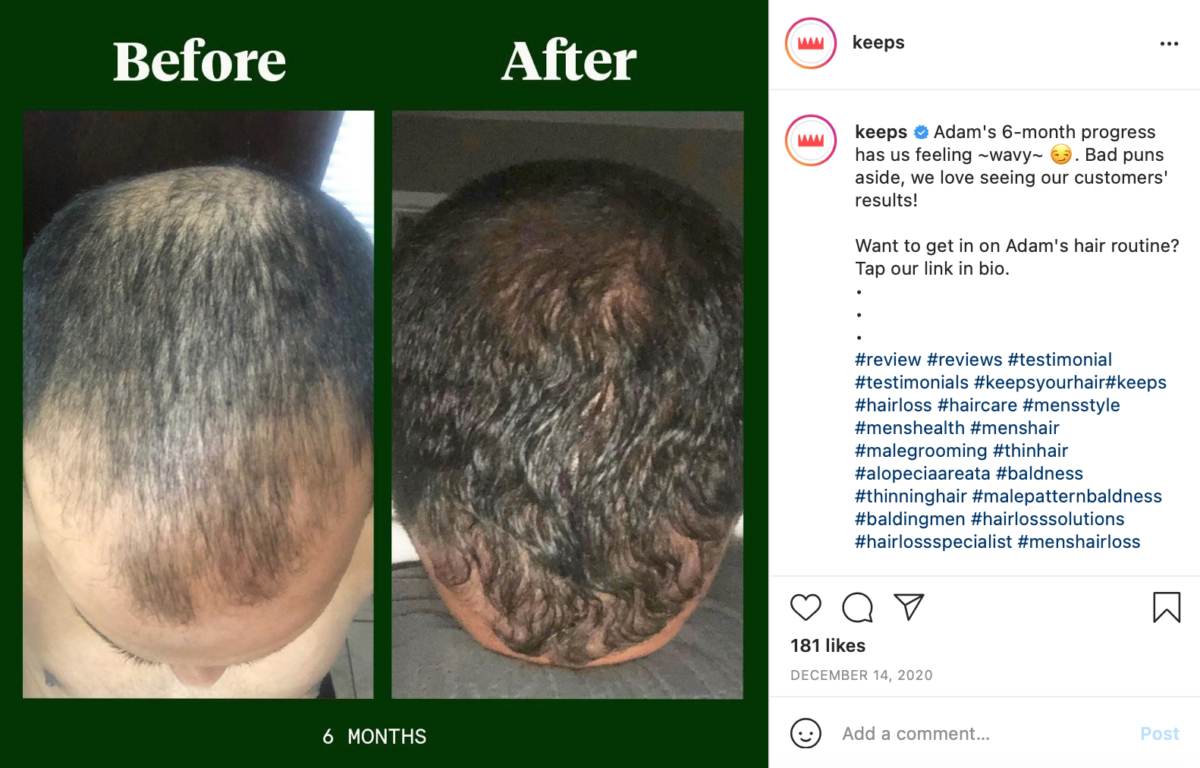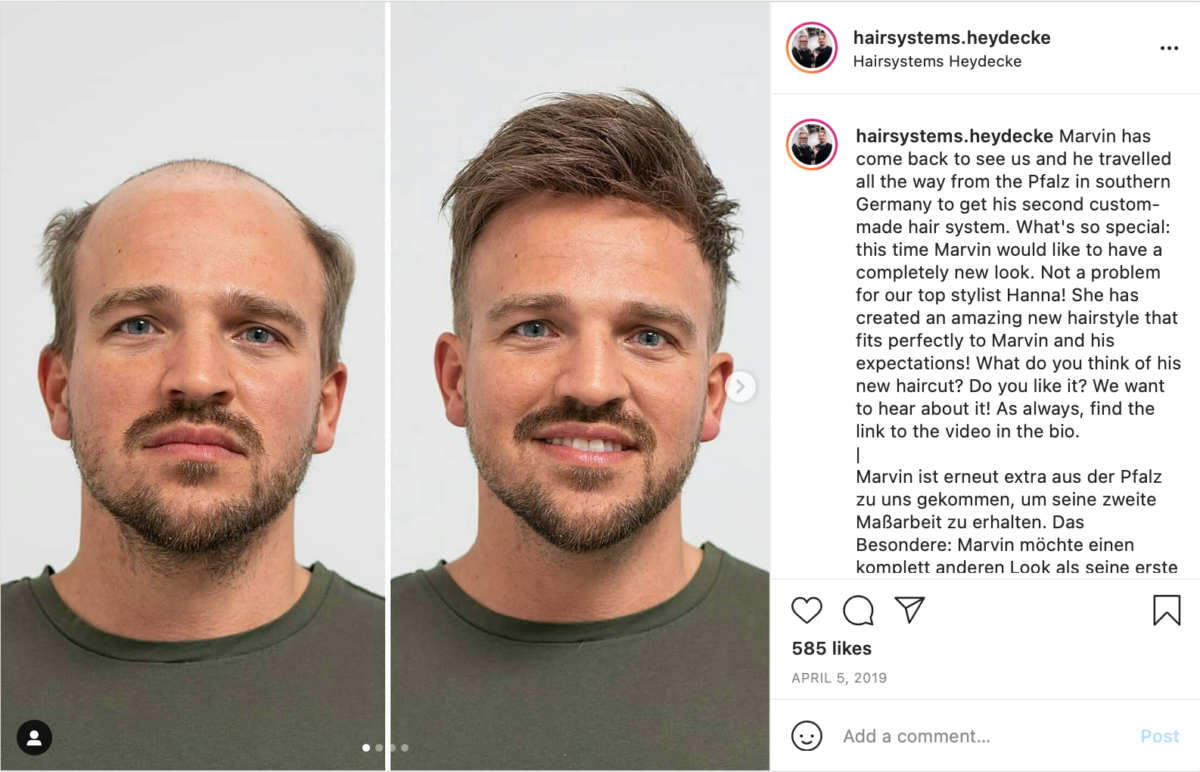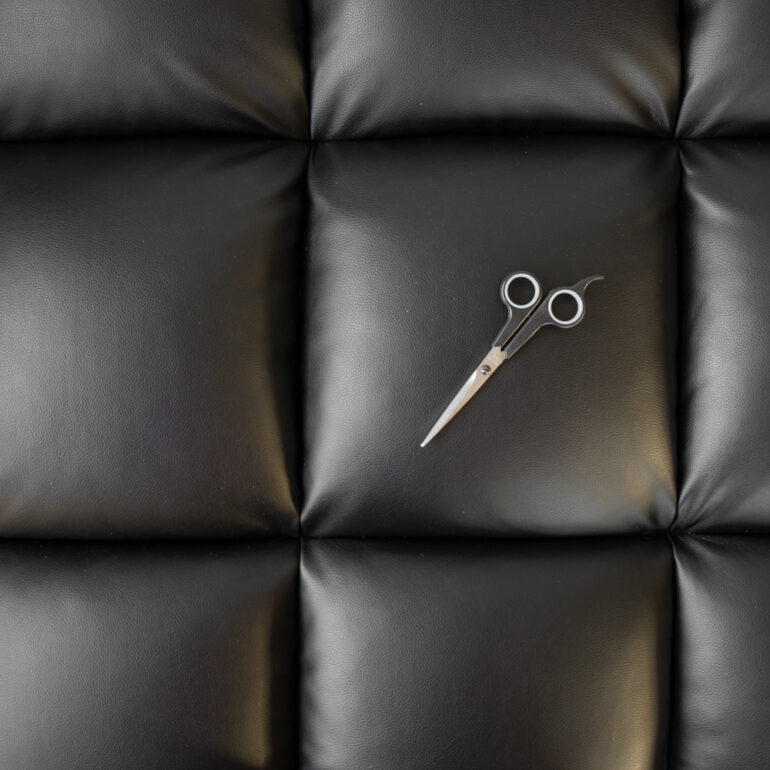Men naturally lose some scalp hair as they grow older — almost two-thirds of men by the age of 35, and roughly 85% of men by the age of 50. And if you have hereditary male pattern baldness, you may lose a bit more. It’s even possible to lose all your scalp hair during your 20s — if not before then! If that hasn’t happened to you, count yourself lucky.
Alopecia is the collective term for hair loss, a condition that, while physically harmless, can cause emotional distress due to societal pressures to look a certain way. Some forms of alopecia are reversible; others are not. The condition can occur all over the body, including eyebrows and eyelashes. However, the scalp is what’s most often the cause of concern, and understandably so. Want to stop hair loss problem as soon as possible? Download The Coach App and forget about alopecia!
Do You Have Male Pattern Baldness? Here’s How to Find Out
If you’re finding lots of hair on your bed, or in the shower, or caught between the bristles of your comb, that doesn’t necessarily mean you’re suffering from this hereditary form of hair loss, also known as androgenic alopecia.
We naturally lose around 100 hairs a day, as the scalp sheds old hair and grows new hair. This is a normal part of the hair growth cycle.
But what might indicate you have male pattern baldness?
- A receding hairline
- Thinning of the crown (the top-back) of your head
- Bald patches
If male pattern baldness is what’s behind your thinning scalp, this is due to your body’s conversion of testosterone into dihydrotestosterone (DHT), which can cause hair follicles to shrink. Some of us carry follicle genes that are sensitive to DHT, and the receding hairline and thinning crown begin.
But if you experience a sudden loss of patches of scalp hair or a loss of body hair, there may be another culprit behind your hair loss. Get in touch with your doctor.
What Are Other Causes of Hair Loss?
Before we get into that, let’s take a quick moment to dispel some common myths. Wearing hats and using hair products (e.g. hairsprays, gels, waxes) do not cause hair loss. They only speed up existing hair loss, by pulling out extra hair from an already thinning scalp.
That said, excessive use of high-heat treatments or harsh chemicals in dyes or other products can inflame the scalp and accelerate hair loss.
So now, back to some true causes of hair loss. If hair loss isn’t due to male-pattern baldness, other causes could be stress, certain medications, and illness. Alopecia-triggering illnesses include anemia and a range of auto-immune diseases.
Whatever the cause of your hair loss, a discussion with your doctor is the first step.
Interested in the topic? Subscribe to The Coach Magazine and receive health articles every week
Prevention, Treatments, Cosmetic Fixes — What Are Your Options?
If you’re afraid of getting hair loss, or if you have it, don’t dismay. The world isn’t over, and you’ve got options.
Nutrition
When it comes to prevention, you should always make sure your diet and exercise routines are in check. Hair loss caused by poor nutrition will usually stop following the adoption of a healthy diet: plenty of fresh fruit and vegetables, whole grains, seafood, and poultry, alongside limited red meat, and little to no processed food. And exercise — while not directly linked to hair loss — improves blood flow, which delivers those nutrients to your scalp.
Scalp massage
On the subject of blood flow, a study on 327 men suffering from male pattern baldness found that 69% of the men saw stabilization of their hair loss, or regrowth, after performing a scalp massage on themselves for 11-20 minutes a day, over a period of two months.
To massage your scalp, use extra virgin olive oil, coconut oil, or black castor oil. Use your fingers to work the oil onto your scalp and hair, applying pressure with your fingers onto your scalp, moving in circular motions.
Vitamin C
Vitamin C may be useful if an iron deficiency is the cause of your hair loss. This is because vitamin C helps with the absorption of iron.
Vitamin D
Two studies have shown that vitamin D deficiency can have a possible correlation with hair loss. In one, men with alopecia areata (an autoimmune disorder that causes unpredictable hair loss) had significantly lower levels of vitamin D than the control subjects. Moreover, the lowest levels of vitamin D correlated with the highest instances of hair loss.
In another study, again pairing alopecia areata sufferers against control subjects, 96.7% of the men with the condition were vitamin D deficient. By contrast, 73% of the non-balding control subjects were vitamin D deficient.
The takeaway? If you have hair loss, get your blood work done to check your vitamin levels. You might find you are deficient in Vitamin D. If this is the case, then there are a few steps you can take. First and foremost, get out and get some sunshine, this is by far the best way to absorb Vitamin D into your body. Secondly, you can increase your intake of food sources containing the vitamin, such as salmon and other fatty fish, beef liver or egg yolks. We don’t absorb Vitamin D as well through food as we do through sunlight, however, so you may want to consider a supplement.
Iron
Several studies have shown that iron can have a positive effect on people suffering from hair loss if they were alsoiron-deficient. It’s critical to note that low iron levels is not a common issue for men.
But if your iron levels are low, you could be suffering from a condition causing gastrointestinal bleeding, such as a stomach ulcer, ulcerative colitis or Crohn’s disease. These are serious conditions that should certainly be ruled out, so if the doctor doesn’t suggest it himself, ask to be screened for these diseases.
Finasteride and minoxidil
Remember DHT, the compounds that cause hair follicles to shrink? Well, if you have male pattern baldness, you want to block them! That’s what DHT blockers are for.
These DHT-blocking medications, such as finasteride and minoxidil, are prescription drugs for male pattern baldness, and there’s plenty of evidence that show they’re effective for many users. But here are some things to consider:
- These medications work only so long as you keep taking them.
- Not everyone will see results.
- They’ve also been shown to cause erectile dysfunction, gynecomastia (male breast enlargement), and a decline in libido in some men.
If you’re interested in trying a DHT blocker, again, definitely have a talk with your doctor. Or check out our special partnership offer with The Keeps Company.

Ketoconazole shampoo, also a DHT blocker, is the onlyhair loss shampoo with any scientific backing to its claim. Several studies have shown that it’s effective in the improvement of male pattern baldness. Ketoconazole shampoo halts hair loss and even promotes the regrowth of hair.
Saw palmetto
Saw palmetto, a natural DHT blocker and alternative treatment to hair loss, has been used by Native Americans as a food source and medicine for hundreds of years. In one study, 50% of men with male pattern baldness saw improvement from the topical application of a saw palmetto supplement.
Low-Level Light Therapy (LLLT) devices
These seemingly sci-fi devices include wands or caps that emit red LED light, believed to increase blood flow to hair follicles and reduce inflammation. The great news is that LLLT devices have been FDA-approved.
In 2017, a meta-analysis showed that LLLT devices were superior to a placebo in re-growing hair.
Hair systems
Yes, the days of wigs are over (although certainly still available). You can now use high-tech hair systems, which connect with your existing hair. The result? A breathable and semi-permanent hair replacement solution that allows your underlying, natural hair to grow!
These cosmetic options can be indistinguishable from the real thing and come in a range of prices depending on whether they use synthetic hair or real hair.
Hair transplants

Hair transplants, like faux hairpieces, have come a long way in recent years. These procedures remove the follicles from the back of your head and transplant them onto areas where your hairline, or crown, lacks hair. (Fortunately, the hairs on the back and sides of our head don’t suffer the same hormonal decline that hairs on the top of your head do.)
In an average surgery, 700-1500 follicular units (follicles) are transferred onto the affected area. This procedure often leaves a patient with a thinner-looking hairline for the first few months after it’s completed. It will take 6-12 months before the transplanted hairs fall out, regrows, and gets to a length that achieves the patient’s desired look.
To maintain the look post-transplant, a prescription DHT blocker is typically prescribed to avoid further hair loss.
Micro-pigmentation
In this cosmetic technique, tattooing techniques are used to camouflage thinning hair. Tiny dots are tattooed across the scalp, creating a thicker look and fuller hairline.
Therapy
For many people, losing hair is no bother at all. But for others, this can cause tremendous emotional strain. Although historically male pattern baldness was a sign of virility and wisdom in many societies, today it’s often something that is ridiculed.
If your hair loss distresses you, have you considered that you might actually rock that skinhead look? It could be a blessing in disguise.
Otherwise, do contact a professional therapist to discuss your problem. As they say, a problem shared is a problem halved.
Disclaimer: This information isn’t a substitute for professional medical advice, diagnosis, or treatment. You should never rely upon this article for specific medical advice. If you have any questions or concerns, please talk to your doctor.

